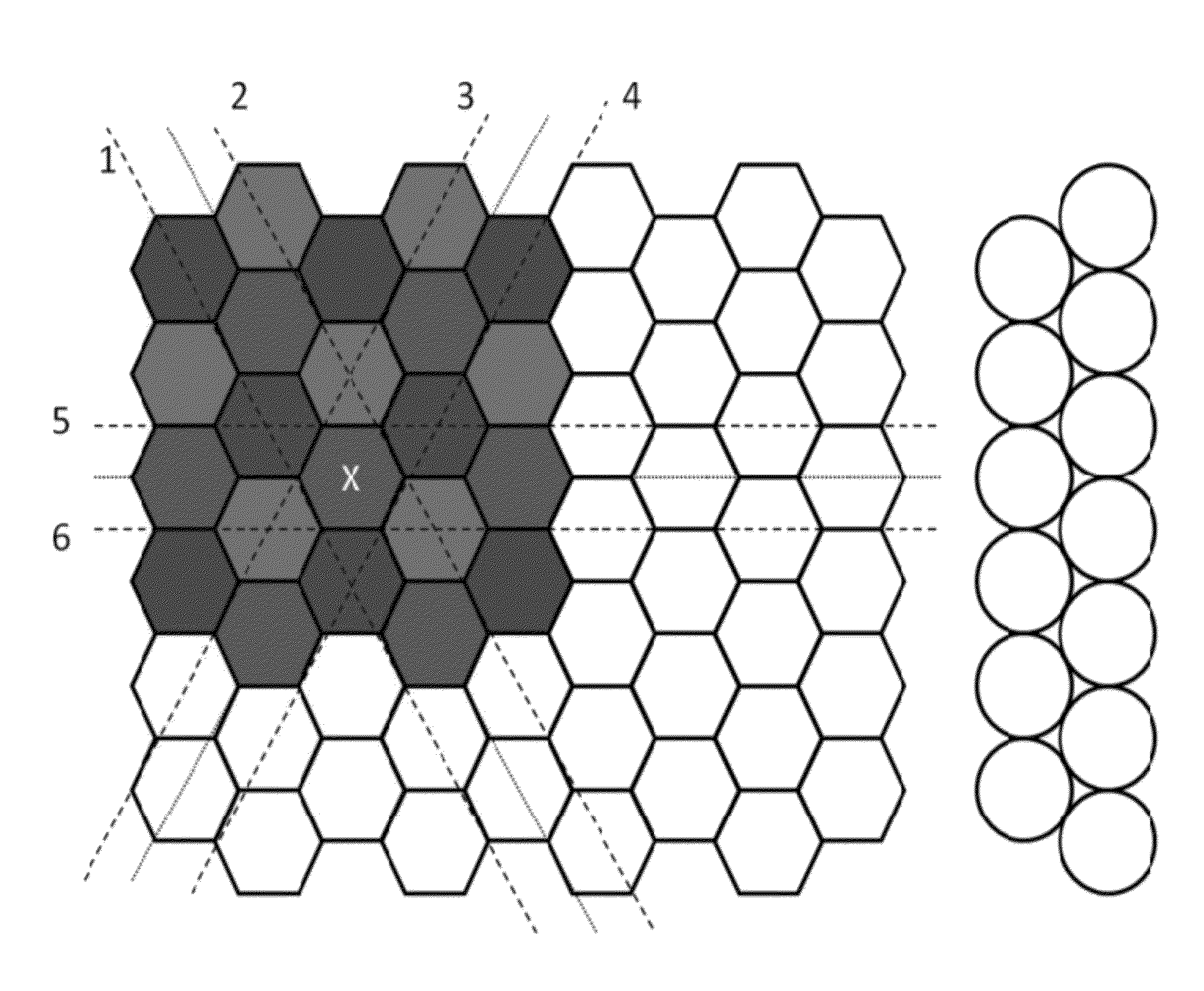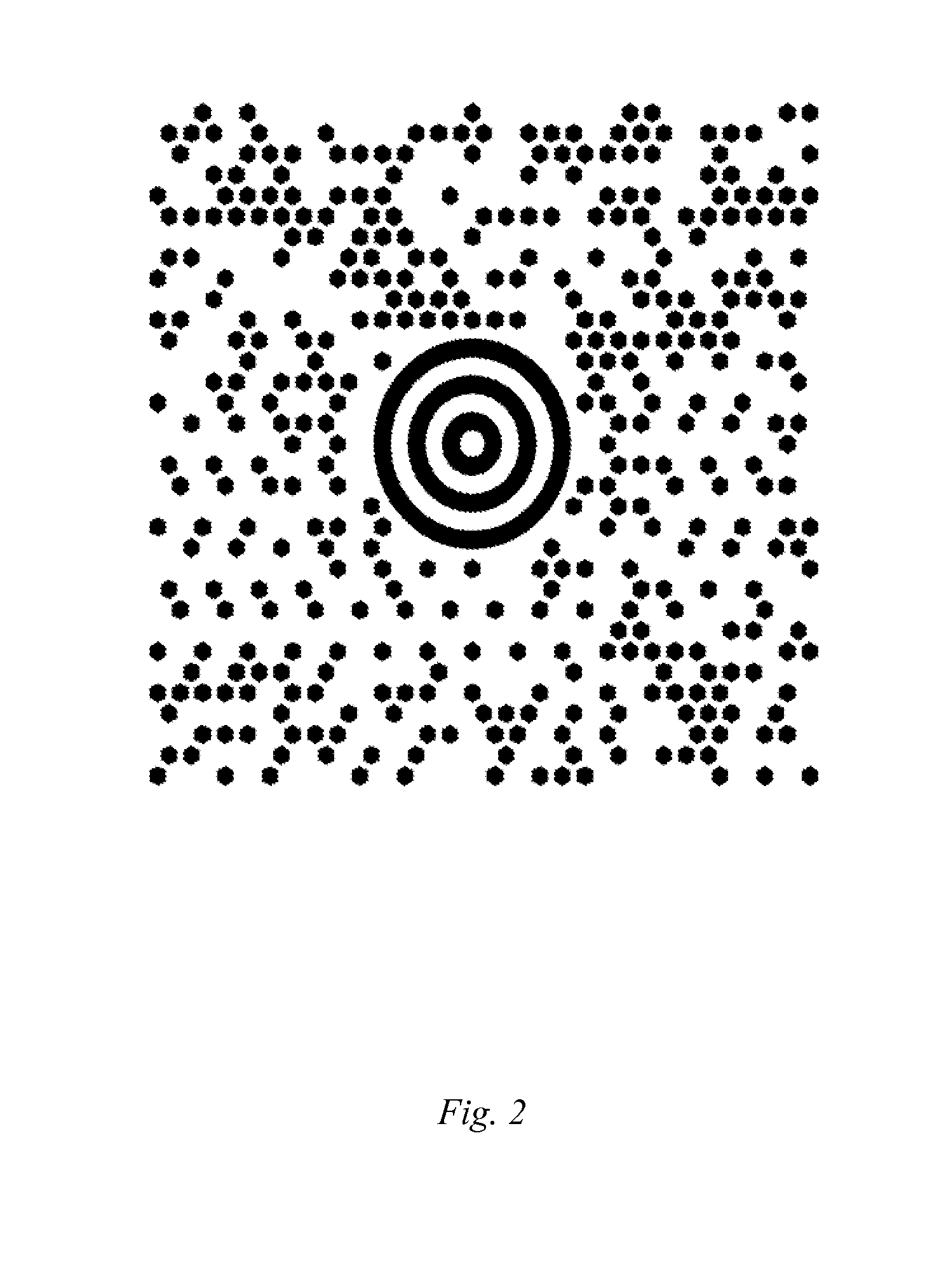Producing, Capturing and Using Visual Identification Tags for Moving Objects
a technology for visual identification and objects, applied in instruments, sensing record carriers, computing, etc., can solve the problems of two-dimensional barcodes or matrix codes, difficult to read, and only a relatively limited amount of information
- Summary
- Abstract
- Description
- Claims
- Application Information
AI Technical Summary
Benefits of technology
Problems solved by technology
Method used
Image
Examples
Embodiment Construction
[0041]As shown in FIG. 10b, a reference Tag 2 (REF Tag 2), contains a central hexagon surrounded by two layers of identical hexagons. This tag has a capacity of up to 39 bits when the coding is rotationally invariant. As a comparison, a full longitude-latitude co-ordinate pair requires only 21 bits. The hexagons are regular: if the hexagon side is A, then its height is A√{square root over (3)}. The used colors are black, Red, Yellow, Green, Cyan, Blue, Magenta, and white, in this order.
[0042]IMAGE 1 illustrates a somewhat unusual physical embodiment of the visual reference A Tag. This is a real life photograph showing the projection of dichroic filtered colors by a “Dolce Vita” Oligo halogen lamp, Ref. 5), in the inventor's flat. Note that the Cyan filter is missing. The filters could be switched manually so as to share one of the 5!=120 secret messages, for example.
[0043]FIG. 5 illustrates how covering the plane with circles of a given radius (right) is well approximated by the hon...
PUM
 Login to View More
Login to View More Abstract
Description
Claims
Application Information
 Login to View More
Login to View More - R&D
- Intellectual Property
- Life Sciences
- Materials
- Tech Scout
- Unparalleled Data Quality
- Higher Quality Content
- 60% Fewer Hallucinations
Browse by: Latest US Patents, China's latest patents, Technical Efficacy Thesaurus, Application Domain, Technology Topic, Popular Technical Reports.
© 2025 PatSnap. All rights reserved.Legal|Privacy policy|Modern Slavery Act Transparency Statement|Sitemap|About US| Contact US: help@patsnap.com



